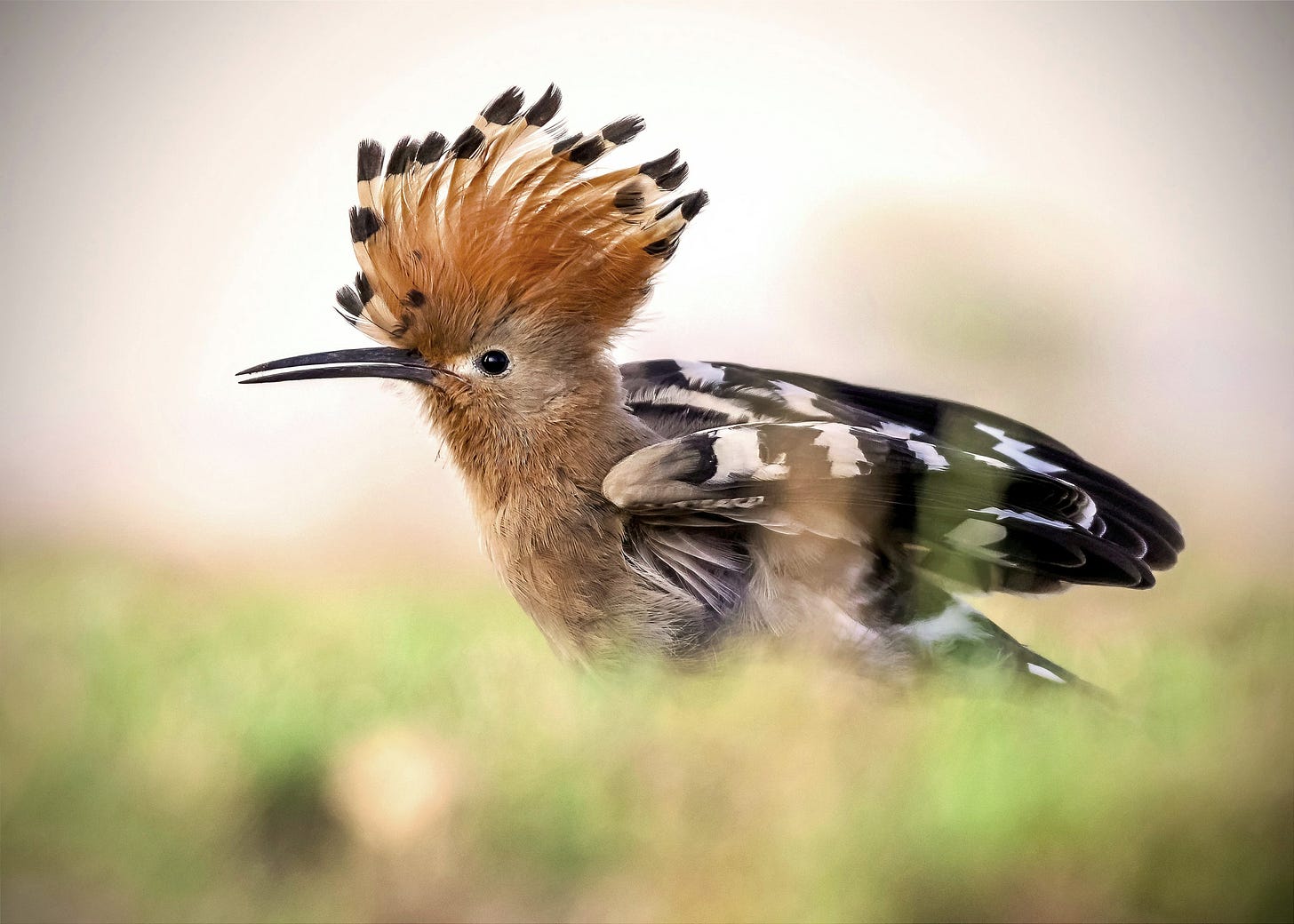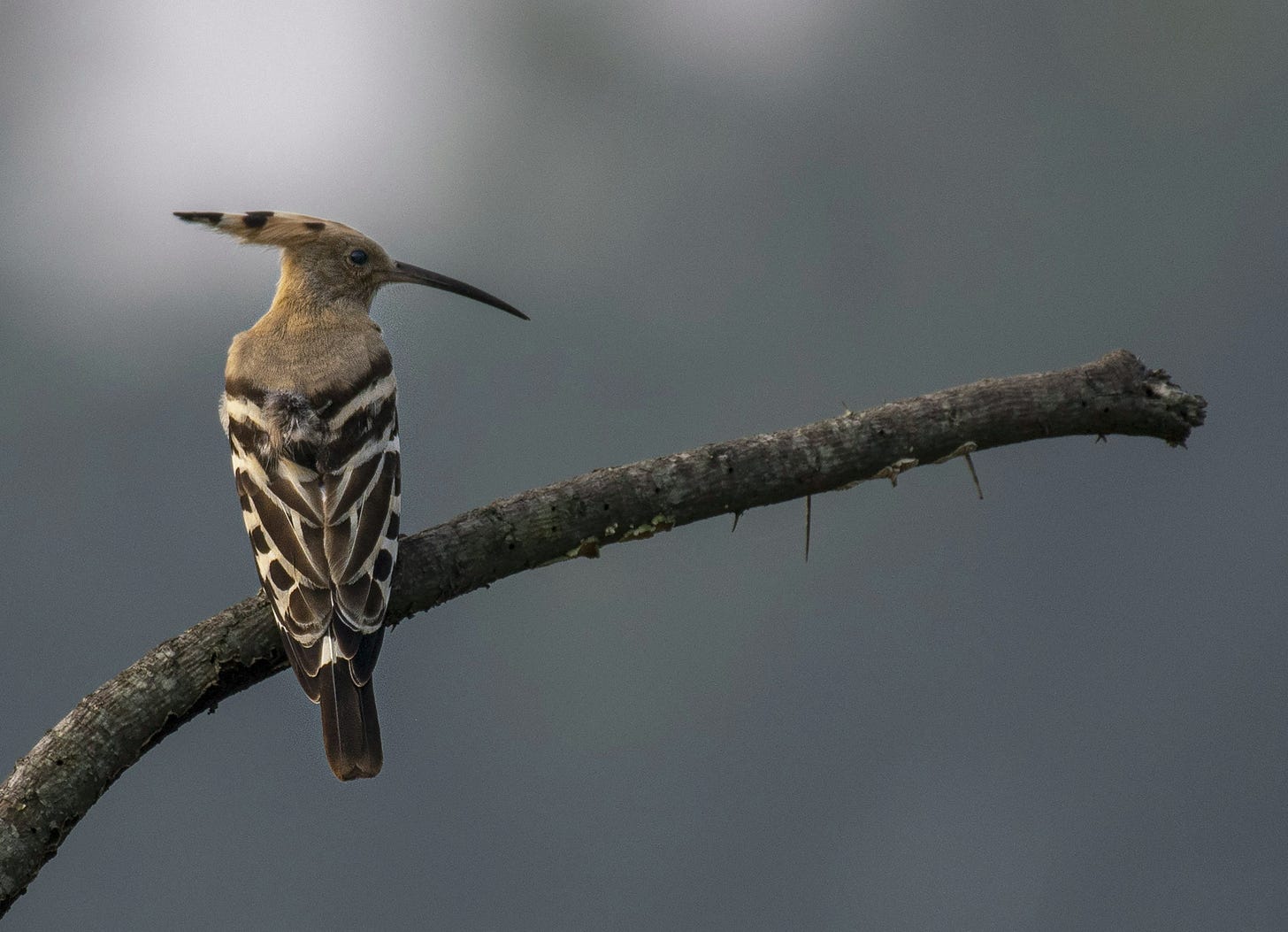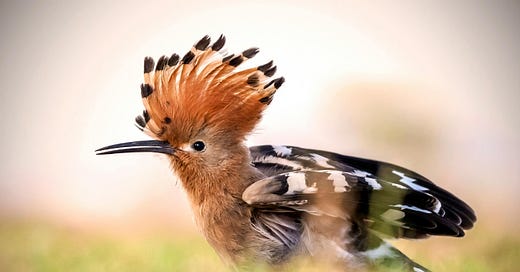The secret ingredients of hoopoes' stinky preen oil help keep their feathers safe
Hoopoes harbor symbiotic bacteria in their preen gland that supplement the birds' preen oil with antimicrobial compounds.
In a lab experiment, the bacteria can digest an entire feather within only 24 hours. In the wild, they pose a major threat to birds, especially vulnerable ones such as nestlings. Meet Bacillus licheniformis, a bacterial strain that breaks down keratin, the material that feathers are made of. And meet the hoopoe, the bird that has found a highly effective way to cope with microbes such as Bacillus licheniformis—with a little help from its symbiotic bacteria.

Birds produce an oily secretion in their preen gland on the upper side of the base of their tail. Through preening, this secretion is distributed in their plumage and keeps the feathers intact. The preen gland secretion of hoopoes, however, can also have strong anti-predator and anti-microbial properties. What is it that makes hoopoes’ preen oil so special?
Researchers from Spain sampled preen oil from breeding hoopoes and their nestlings in 2007 and detected several antimicrobial substances1. Only five of these substances were present in high enough concentrations to decrease bacterial growth in 19 tested bacterial strains. In combination, however, this mixture of compounds was effective against all 19 bacterial strains—including the feather-degrading Bacillus licheniformis.
The researchers assumed that these antimicrobial compounds come from symbiotic bacteria that are found in the preen gland of hoopoes. An additional experiment confirmed this idea. When the scientists treated some hoopoes with antibiotics, eliminating the symbiotic bacteria in the preen gland, none of the compounds could be found in the secretion anymore!

The preen gland secretion of breeding hoopoes has even more useful properties. Not only does it combat harmful bacteria and parasites, it also emits an exceptionally unpleasant smell of rotten meat, which successfully deters potential predators. Interestingly, though, this type of secretion (which is darker than the typical white preen oil of other birds) is only produced by breeding females and their nestlings. Outside breeding season, hoopoes produce secretions similar in color and smell to that of other birds, containing none of the antimicrobial or stinky compounds.
Good for the hoopoes that they found such an effective way to protect their plumage from the feather-degrading Bacillus licheniformis. What would a hoopoe be without its beautiful crown of feathers?

Thanks for reading Beaks & Bones. If you liked this post and would like to learn more about what researchers around the world discover about birds, please consider subscribing for free.
Have a wonderful rest of the week! All the best,
PS: My most recent art project: a new logo and word mark for this newsletter! I was disappointed to realize that these images are only ever shown in tiny sizes on the Substack website or in the app. But I think it was still worth the effort!







I wanted to see a Hoopoe so badly when I was in Portugal. You always add another dimension to the way we look at birds
how fascinating! thank you for sharing this, Maja!